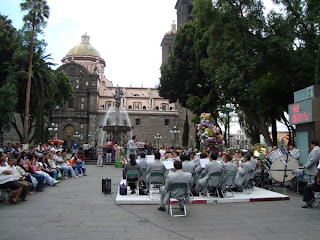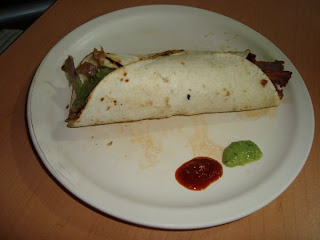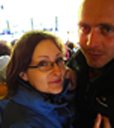

Here we are!!! Mexico City!!! 9 months after landing in Buenos Aires, we reached the last stop on our trip.
We stayed in Mexico for 1 week and half spending time visiting the city and the surroundings but also finishing to buy some presents for family and friends. Our hotel was situated in the Cuauhtemoc Colonia, close to the Hidalgo Metro station which allowed us to be pretty mobile as the Metro system in Mexico City was excellent. We used it all the time!
Mexico City Metropolitan Area has a population exceeding 22 million people. That is the third largest in the world. What was strange was the fact that the streets were quite empty and even in the Metro the wagons were not over crowded.
The "Ciudad de Mexico" was officially established in 1585. Before, in 1325, the city was an Aztec city called Tenochtitlan (and was built on a island) then known in 1524 as Mexico Tenustitlan after the Spanish conquest. Cortes, helped by the Tlaxcalan arrested first Montezuma, the Aztec chief then defeated the new chief Cuauhtemoc in 1521 after a siege of three months. Mexico City was rebuilt on the ruins of Tenochtitlan as Cortes razed the Aztec city. Due to constant flooding, during the 17th Century, the lake was filled and the water drained. The city then prospered specially due to its location close to both the Pacific and Atlantic oceans. The independence of Mexico was declared in 1824 with Mexico City being its capital.
- The Torre Latinoamericana was built in 1956 and with 183m with 45 stories, was the tallest building in Mexico City (until 1972) and at this time the tallest in Latin America. Situated in the historic center, it offered a superb panoramic view of the city...
-...and was nicely illuminated after the sunshine with a variety of colours and a lightshow. The pictures were taken from the Alameda Central and the gardens of the Palacio Bella Arte.
- The Plaza de la Constitution or Zocalo. We were surprised how far we could see over the town. We knew that Mexico City was suffering from poor air quality but that was not so bad. This picture is the best I had from the Zocalo due to the installation of white tents here for a temporary exposition. These tents were masking all the Plaza and the picture of the cathedral was only possible from the Palacio National (see next post). We can recognise on the left the cathedral, in front the Palacio National and in the center of the Plaza the impressive flag. This flag was created in 1821 when the Independence movement had ended victoriously.
- The Alameda Central was created in 1592 as a public park. It occupies now an old Aztec market place. In the left center of the park, we can distinguish the "Hemiciclo a Juarez", a semi-circular monument dedicated to Benito Juarez. Our hotel was just at the end of the park (where we can see the high buildings),
- The Palacio Bella Arte. The theater is used for classical music, opera and dance. The outside are made of italian white marble and inside the murals are from various known artists like Diego Rivera. It was built during the Presidence of Porfirio Diaz and its construction took 30 years due to various building problems and the Mexican Revolution,
- West view of Mexico City. In the background, on the left, Santa Fe. Then the Torre Mayor, the tallest tower in Mexico City. On the background right, the Torre Pemex. On the center left, the Chapultepec park.
- North view of Mexico City. On the bottom left (white roof), the Senado de la Republica with on its left, the Postal Palace and in front, the Museum National of Art.






















































